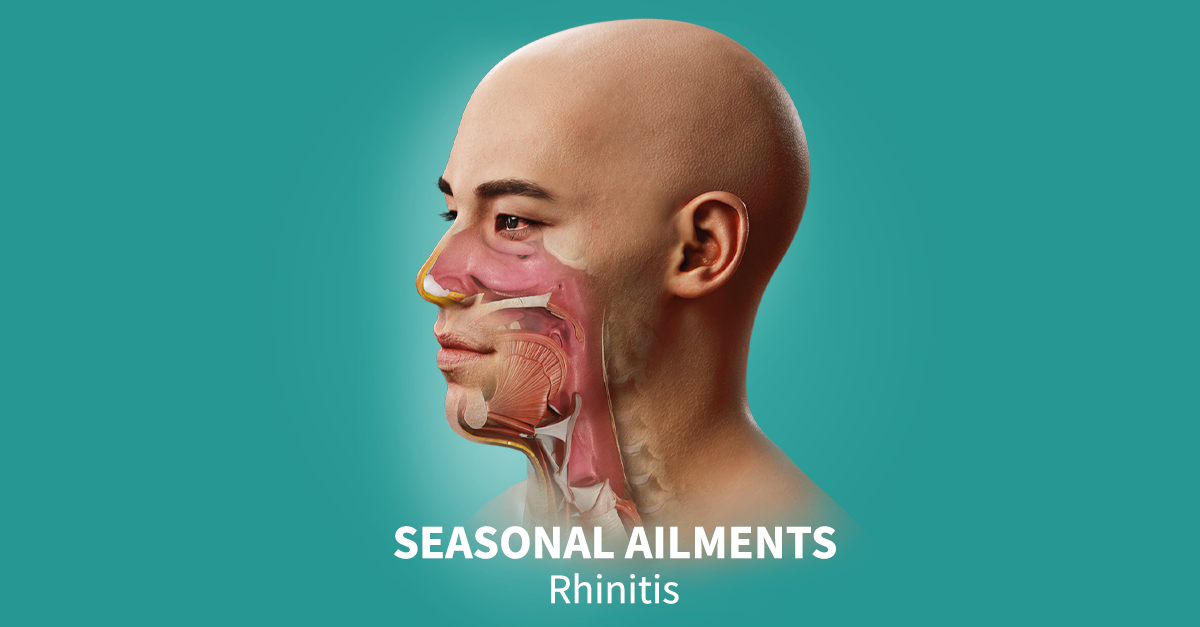
At this time of year, there are different seasonal worries. In the southern hemisphere, where it is summer, rhinitis can be more prevalent. While in the northern hemisphere, where it is winter, the flu is more widespread.
Rhinitis is inflammation and swelling of the nasal passageway. This is caused by a trigger or allergen that causes your body to release histamine. Symptoms of rhinitis include congestion, a runny or blocked nose, sneezing and itching.
There are different types of rhinitis. Allergic rhinitis, more commonly known as hay fever, is caused by seasonal allergens such as plant pollen, animal dander, mould spores or dust mites. Unlike allergic rhinitis, nonallergic rhinitis is not caused by allergies. Some triggers of non-allergic rhinitis include dust, fumes, certain medicines, weather changes, spicy foods or other health problems. Treatment for rhinitis includes avoiding triggers, anti-histamines and decongestant nasal sprays.
The flu, or influenza, is a respiratory illness caused by a virus. It can infect the nose, throat and lungs. Symptoms of the flu include fever, cough, sore throat, runny or blocked nose, body aches, fatigue and vomiting.
The flu is contagious and spreads mainly by droplets released when people cough or sneeze. The flu often resolves on its own but sometimes intervention is needed if it becomes serious. People with higher risk of complications from the flu include children 12 months or younger, people who are pregnant and people older than 65. Getting the flu vaccine each year can prevent the flu.